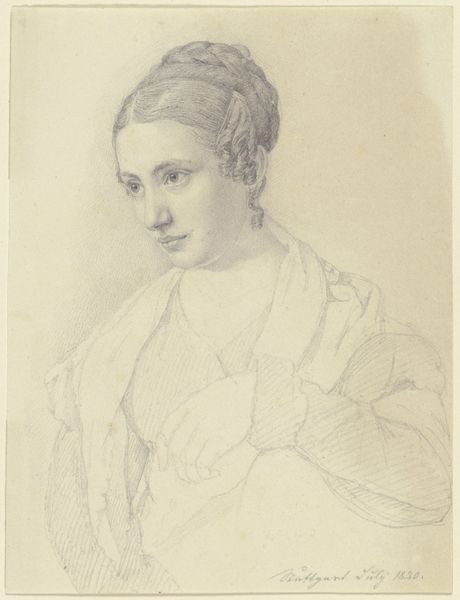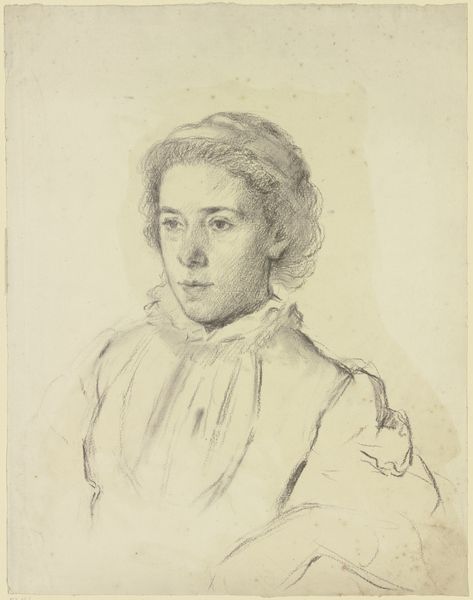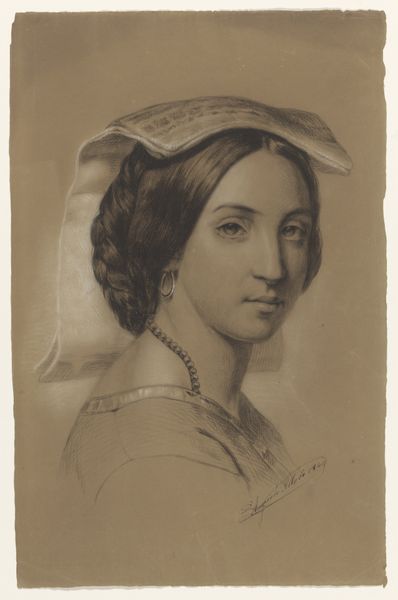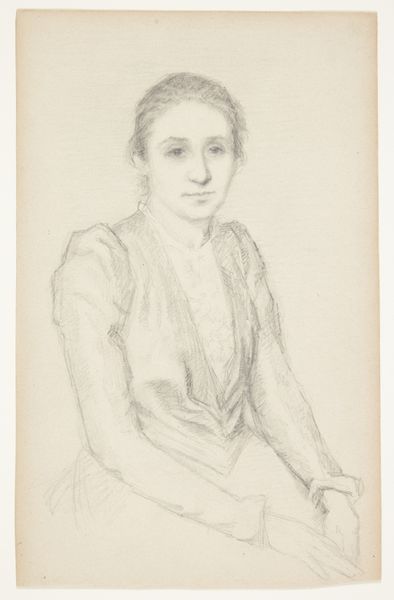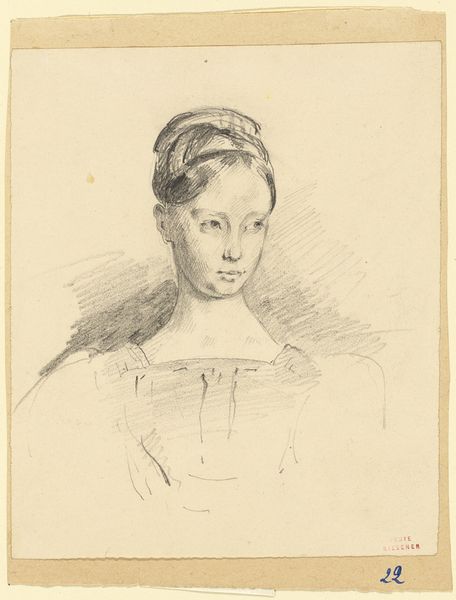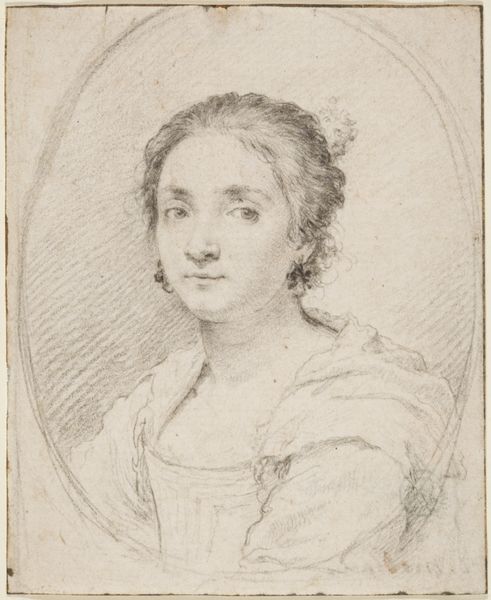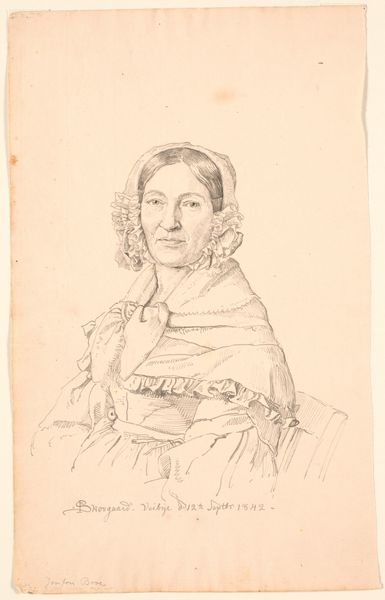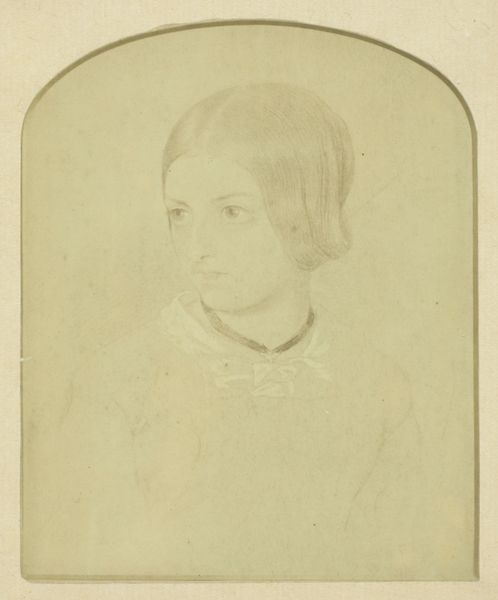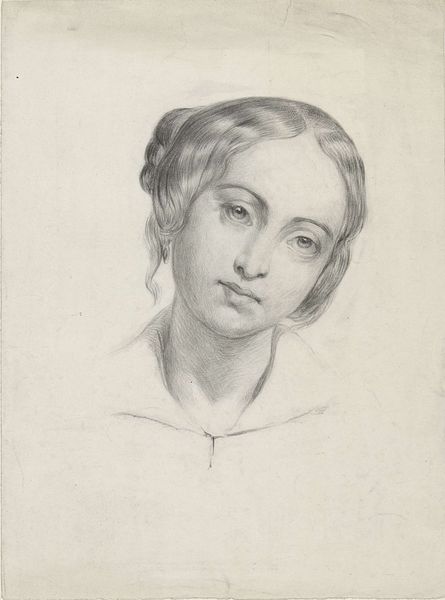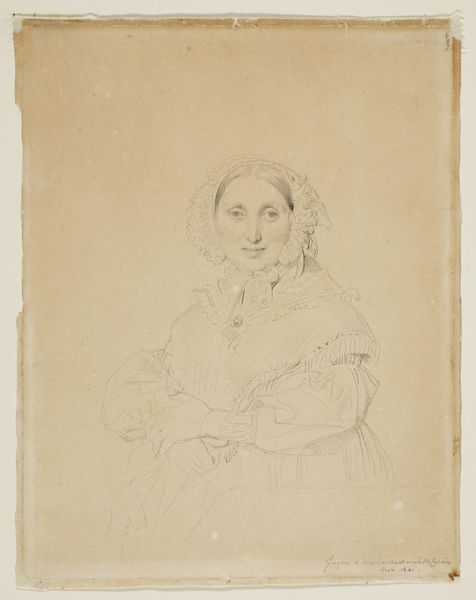
drawing, pencil
#
portrait
#
drawing
#
pencil sketch
#
figuration
#
portrait reference
#
pencil drawing
#
romanticism
#
pencil
#
portrait drawing
Dimensions: sheet: 15.9 x 11.4 cm (6 1/4 x 4 1/2 in.)
Copyright: National Gallery of Art: CC0 1.0
Curator: Here we have Wilhelm von Kügelgen's portrait of Agnes von Felsen, rendered circa 1822. It’s primarily a pencil drawing. What catches your eye? Editor: Immediately, the softness. It's like looking at a dream, a memory barely held onto. And that gentle light on her face, it makes you wonder about the artist’s relationship to the sitter. Curator: It’s intriguing how von Kügelgen utilizes such delicate gradations in the pencil work to capture her likeness, isn't it? This Romantic era approach was focused on subjective emotional experiences and often drew inspiration from idealized figures, influencing the work's overall aesthetic. Editor: Absolutely. I feel like I'm peering into someone's soul, or at least, the artist's impression of it. There's something profoundly human in her eyes. Almost vulnerable. Curator: I think the simplicity of the materials emphasizes that connection you're sensing. Pencil and paper, readily available tools even then, underscore the accessibility of image making to the masses. There's a very humanistic and egalitarian undertone when the artistic act becomes less about elaborate display. Editor: True. You can imagine the artist sketching her in an intimate setting, not for grand posterity, but for personal reflection, almost ephemeral. This piece feels deeply personal in a way a larger scale, more formal portrait might not. I almost get the sense of looking through a peephole into someone's private sphere, observing something hidden. Curator: It brings to mind ideas surrounding Romanticism's fascination with introspection and the burgeoning self-awareness of the era. It's fascinating to analyze how social factors influence creative output even on such an individual scale. Editor: Right? Maybe Agnes herself also was struggling with identity, perception. You feel this could almost serve as an inner portrait, as a mask or facade hiding her doubts. Thanks to its fragile and personal essence. A beautiful artifact! Curator: Indeed. The use of commonplace drawing materials highlights the potential that we all carry to transform perception into lasting marks on history and collective memory.
Comments
No comments
Be the first to comment and join the conversation on the ultimate creative platform.
